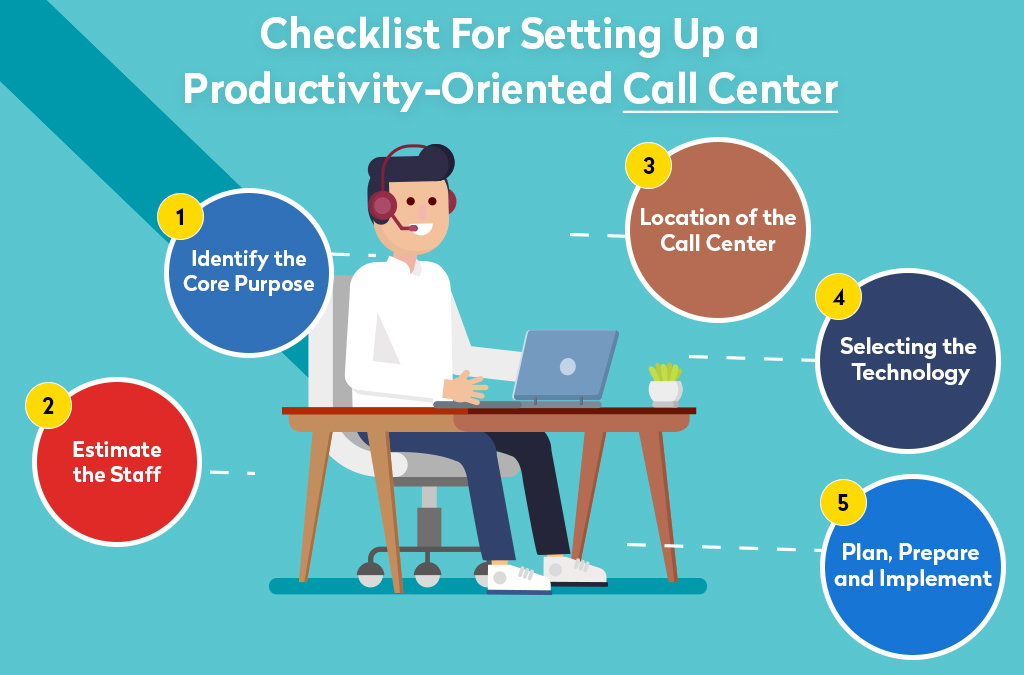Checklist For Setting Up a Productivity-Oriented Call Center

Handling customer management in the most efficient way and bringing productivity to the business, a call center is certainly a huge investment and commitment towards the company. With the inclusion of technology and streamlined processes, call centers or customer service center have become the bedrock of the company’s functional operations. Having said that, a call center needs to be equipped with trending technologies, leading amenities and essential infrastructure to flourish as reckoned service providers in the market. Furthermore, there are several key fragments that need to be kept in mind while establishing a call center that aims productivity along with efficiency.
Here’s a checklist for setting up a call center that parallels your business objectives-:
Identify the Core Purpose
First things first, it is essential to identify the reason behind setting up a call center, especially focusing on the business objectives. It helps in channelizing your needs according to the customer requirements and build a strong base for the call center operations. Whether you need an outbound call center, want to respond to customer inquiries, or just aim to provide a help desk, it’s imperative to set your business goal and objectives that induces the future growth.
Estimate the Staff
Determining the purpose further helps in calculating the required number of employees for the job. Deciding the size and structure of the call center beforehand is one factor that influences the staff count. Once you have prepared the list of purposes and posses necessary budget for the same, you can seamlessly segregate your recruitments accordingly.
Location of the Call Center
There are plenty of factors that need adherence while deciding the location to set up a call center. For this, it is essential to determine whether you are planning for a physical call center with in-house employees or looking for a virtual call center set up with remote staff. All these factors influence the location of the call center. A physical call center would require a location that is in close proximity of the headquarters to embed a strong communicational channel and within the geographical reach of the core management team. Virtual call centers, on the other hand, substantially mitigate the infrastructural investments, your employees only require a system and consistent network connectivity.
Selecting the Technology
Technology should be tantamount to the core business objectives, hence the focus should be on softwares and hardwares that best suits your requirements. Preparing a generic list of call center technologies won’t be a complete help, rather use the inside-out approach that can guide you to make informed decision that is relevant for the business.
Some of the factors that help in steering through options are-:
- Channels of the customers
- The amount of data and required storage type
- Need for CRM system to better manage the customers
- Mode of routing the calls
Here’s a list of core technologies that every call center primarily require-:
- Agent Desktop
- Cloud Solutions
- Workforce Optimisation
- Multichannel communication (VOIP phone service)
- Customer Relationship Management (CRM) system
- ACD/Call Routing
Plan, Prepare and Implement
Having a staunch plan, utter diligence and a streamlined checklist ready can steer you through the process of establishing a proficiency-oriented call center that works for enhancing customer experience and accelerating productivity of the business. Prepare a detailed plan and jot down your own checklist that resonates the business objectives.
